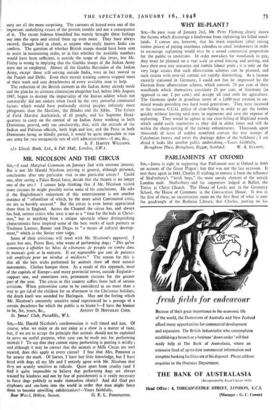WHY REPLANT ?
Sift,—In your issue of January 2nd, Mr. Peter Fleming clearly shows the factors which discourage a landowner from replanting his felled wood- lands. I cannot see, however, that his main expedient (after raising timber prices) of paying enormous subsidies to small landowners in order to encourage replanting would ever be a sound commercial proposition for the public to undertake. In order nowadays for woodlands to pay, they must be planned on a vast scale to avoid fencing and netting, and have their own tree nurseries and mobile labour pools ; it is only on the very large estates that such afforestation schemes can be planned, and such estates with over-all control are rapidly diminishing. As a layman recently stationed in Germany, I could not but be impressed by the German State afforestation scheme, which controls 70 per cent of their woodlands which themselves constitute 25 per cent. of Germany (as opposed to our. 2 per cent.) and occupy all land unfit for agriculture. The Germans spoke in grandiose terms of a 1,000-year rotation in un- mixed woods providing two hard wood generations. They were incensed at the ruinous C.C.G. policy of clear-felling in order to get the timber quickly without leaving seed trees to regenerate and save the expense of replanting. They would be aghast at our clear-felling of Highland woods which could easily regenerate as they did in olden times and still do within the sheep-netting of the railway enbankments. Thousands upon thousands of acres of sodden moorland contain the tree stumps of Caledonian forests and await the drainage dykes of the bulldozer ; I am afraid it looks like another public undertaking.—Yours faithfully, Broughton Place, Broughton, Biggar, Scotland. W. A. Eu.torr.


































 Previous page
Previous page